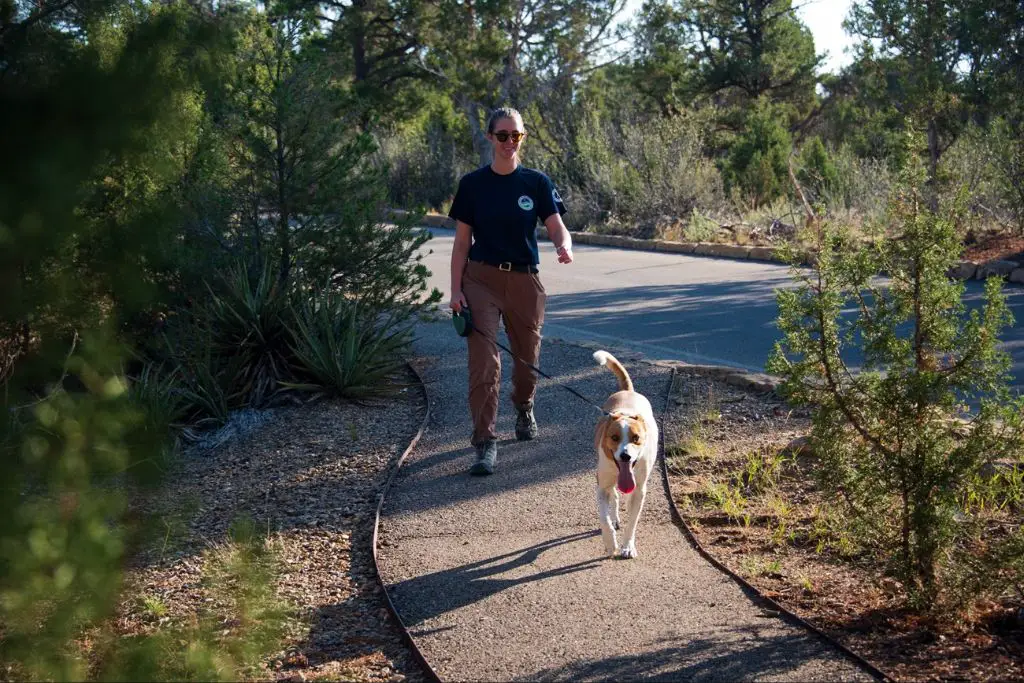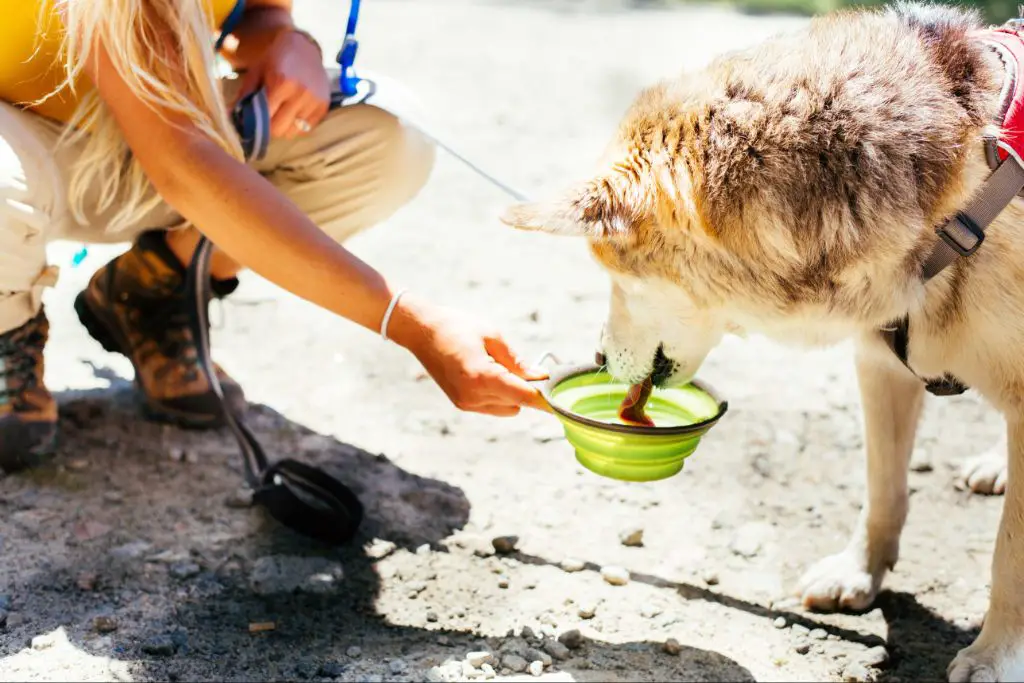Introduction
Utah is home to five incredible national parks that draw visitors from around the world. These parks, including Zion, Bryce Canyon, Arches, Capitol Reef, and Canyonlands, showcase the diverse landscapes and unique geological formations found across the state. From soaring sandstone cliffs to sculpted canyons, Utah’s national parks offer outstanding opportunities for exploration, hiking, camping, and photography. For many visitors, their trip would not be complete without bringing along their four-legged companions. This raises an important question – which Utah national parks allow dogs? In this article, we will provide an overview of the pet and dog rules in place at all five national parks in Utah.
Overview of National Parks in Utah
Utah is home to five spectacular national parks that draw visitors from all over the world. These parks are known for their unique natural beauty and outdoor recreational opportunities.
The five major national parks in Utah are:
- Zion National Park
- Bryce Canyon National Park
- Arches National Park
- Canyonlands National Park
- Capitol Reef National Park
Zion National Park features massive sandstone cliffs, narrow slot canyons, and the Zion Narrows. Bryce Canyon is famous for its towering hoodoos and red, orange, and white spires. Arches protects over 2,000 natural stone arches and towering rock fins and spires. Canyonlands offers vast canyon landscapes carved by the Colorado and Green Rivers. Capitol Reef encompasses the Waterpocket Fold, a giant wrinkle in the earth’s crust.
With their spectacular scenery and excellent hiking trails, these five parks showcase the incredible diversity of Utah’s landscape.
Rules About Pets in National Parks

The National Park Service (NPS) has some general rules and regulations regarding pets that apply across all national parks in the United States. According to the NPS, pets are only allowed in certain areas of national parks, and they must be restrained on a leash no longer than 6 feet at all times. This applies to any domesticated animals that visitors bring with them, including dogs, cats, and other pets.
Pets are prohibited from entering any public buildings, visitor centers, restaurants, campgrounds, and any designated swimming areas within national parks. There are some exceptions for service animals, which are allowed in most areas of national parks. But for regular pets like dogs and cats, they must remain outdoors and on trails at all times.
Pet owners are responsible for properly disposing of all pet waste and ensuring their pets do not disrupt or threaten wildlife while visiting national parks. Dogs that exhibit aggressive behavior must be promptly restrained. Overall, the NPS aims to balance pet access with protection of park resources and safety of other visitors and wildlife.
While these rules provide a general framework, some specific national parks have additional restrictions or allowances when it comes to pets. It’s important for visitors to research the pet policies at individual national parks before planning a trip with their furry companions.
Pet Rules at Zion National Park
Zion National Park has very strict regulations regarding pets. Dogs and other pets are prohibited on all trails, backcountry areas, and in the Virgin River. The only place pets are allowed in Zion is within the campgrounds and picnic areas next to the road. Even within those designated areas, pets must be kept on a leash no longer than 6 feet at all times. Pet owners are also required to clean up after their pets in campgrounds and picnic areas.
The reason for Zion’s strict pet rules is to protect native wildlife and plants. Many of the trails are narrow and could cause undue stress to pets and wildlife if they were to interact. Dogs specifically are prohibited in the backcountry and wilderness areas because their scent can impact prey animals like deer for many hours afterwards. By keeping pets restricted to just the campgrounds and picnic areas, it helps minimize their environmental impact on Zion’s fragile ecosystem.
Bryce Canyon National Park is a well-loved park famous for its myriad of dazzling pink, orange, and red colored sandstone formations known as “hoodoos”. However, with over 35,000 acres of land and elevations between 6,600 feet and 9,000 feet, Bryce Canyon may pose some challenges for visitors hoping to bring their furry friends along.
Pet Rules at Bryce Canyon National Park
Bryce Canyon National Park allows pets, but they must be leashed at all times. Pets are prohibited on all hiking trails, in the backcountry, and in buildings. There are some exceptions that allow service animals accompanying people with disabilities on the trails and in buildings.
Visitors are asked to not leave pets unattended at any time, and must clean up after their pets. Pets should not be left tied up alone outside of campgrounds or buildings. Extreme summer heat can pose risks to pets, so adequate water and shade must be provided.
Within the Bryce Canyon Village area, pets are allowed in the general store plaza and large parking lots. They may be walked through the campgrounds to access the canyon rim trails, but cannot stay in the campsites. Pets may also access the Bristlecone Loop Trail.
In summary, Bryce Canyon National Park welcomes pets in developed areas while leashed and under control. However, pets are restricted from entering hiking trails, wilderness areas, buildings, and campgrounds due to safety and courtesy reasons. Planning ahead and being prepared for extreme weather conditions is important when bringing pets to Bryce Canyon.
Pet Rules at Arches National Park
Arches National Park has specific regulations regarding pets to protect wildlife, plants, and other visitors. Pets are only allowed in developed areas of the park, including paved roads, paved parking lots, and designated campgrounds. Pets must be restrained on a leash no longer than 6 feet at all times.
Pets are prohibited on all Arches hiking trails, backcountry areas, and in any undeveloped areas. This includes special attractions like Delicate Arch, Devil’s Garden, and Fiery Furnace. Pets may not be left unattended in vehicles or RVs due to the extreme desert heat. There are no kennel facilities in Arches, so pet owners need to make off-site accommodations if they plan to visit the backcountry.
Service animals are allowed in areas usually off-limits to pets, but they must remain under control at all times. Pet owners are responsible for cleaning up after their animals and properly disposing waste. Fines can be issued for failing to comply with pet regulations in Arches.
By following the rules for pets, owners can enjoy designated areas of Arches National Park while protecting the fragile desert ecosystem. Planning ahead and being prepared with restraints, waste bags, and water will make a visit pleasant for pets and owners alike.

Pet Rules at Capitol Reef National Park
Capitol Reef National Park is a stunning geologic landscape in southern Utah that does allow pets, but they must be leashed at all times. There are some areas of the park that have more stringent restrictions.
In the developed areas of the park, the visitor center, picnic areas, campgrounds, and trails, pets must be kept on a leash no longer than 6 feet at all times. This includes the Fremont River Trail and all connecting paths and trails near the visitor center and Fruita campground. Pets are prohibited inside park buildings or on shuttle buses.
In the backcountry and undeveloped areas, pets must be leashed in canyon bottoms. However, they may be off-leash but under voice control on routes and washes located above canyon rims. Owners are still responsible for cleaning up after their pets.
Some areas of Capitol Reef are especially sensitive environments and have additional pet restrictions. Pets are not allowed on Hickman Bridge Trail or in Hickman Natural Bridge area. Pets must be leashed on Cassidy Arch Trail. Pets are prohibited in all river sections through the Waterpocket Fold, including Halls Creek and the Fremont River.
Overall, Capitol Reef National Park aims to provide a safe and enjoyable experience for all visitors while protecting park resources and wildlife. Following leash laws and pet waste policies allows everyone to responsibly enjoy this stunning Utah landscape.
Pet Rules at Canyonlands National Park
Canyonlands National Park has specific regulations regarding pets to help protect wildlife and other visitors. Pets are allowed in developed areas of the park, but must be physically restrained on a leash no longer than 6 feet at all times. Pets are prohibited on all hiking trails, in the backcountry, and in any undeveloped areas of the park.
In campgrounds, pets must be kept quiet and under control. They cannot be left tied and unattended at campsites. Pet owners are responsible for properly disposing of all pet waste by packing it out with trash or burying it at least 6 inches deep and 200 feet from water sources, trails, and campsites.
Service animals are the only exception to Canyonlands’ pet restrictions. They are allowed in all areas of the park. Emotional support animals do not qualify as service animals under the ADA and are subject to the same restrictions as pets.
Pet owners who do not comply with these rules may be issued citations, fines, and even face impoundment of their pet. Canyonlands emphasizes responsible pet ownership to protect wildlife, plants, park resources and the experience of other visitors.
Summary of Pet Rules

To summarize, dogs are allowed in some Utah national parks but with restrictions. At Zion National Park, dogs are permitted on select trails and must be leashed at all times. Bryce Canyon National Park also allows dogs on some trails, roads, and campgrounds but they cannot go below the rim or on any hiking trails. Arches and Canyonlands National Parks do not allow dogs on hiking trails but they are permitted in campgrounds and on paved roads. Capitol Reef National Park allows leashed dogs anywhere a car can travel, but dogs cannot go on any unpaved trails or in the backcountry. So in general, dogs are welcome in Utah’s iconic national parks, but there are limitations on where they can explore off-trail. Always check individual park rules before visiting with your pet.
Conclusion
Utah’s national parks offer stunning landscapes and adventures for all visitors, including those traveling with dogs. While each park has its own regulations, some do allow dogs in certain areas or on certain trails. With advanced planning and preparation, dog owners can find national park experiences in Utah that welcome canine companions.
For dog owners looking to explore Utah’s national parks, options exist but do require research beforehand. Consult each park’s pet policies to see what’s allowed. For more flexibility, aim to visit parks like Canyonlands that allow dogs in some areas. Or consider visiting the parks that prohibit dogs during cooler months when temperatures are more manageable for pups. Prepare properly with leashes, collapsible water bowls, shade, dog boots if needed, and bags for waste cleanup.
While not every national park in Utah permits dogs throughout, with the right planning dog owners can find exciting adventures alongside their furry friends. By checking regulations, packing proper supplies, and being responsible with pets, those traveling with dogs can discover beautiful parks and make unforgettable memories.
